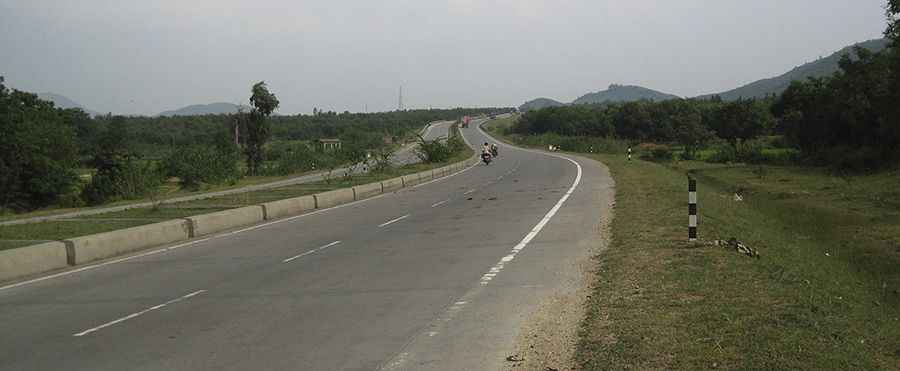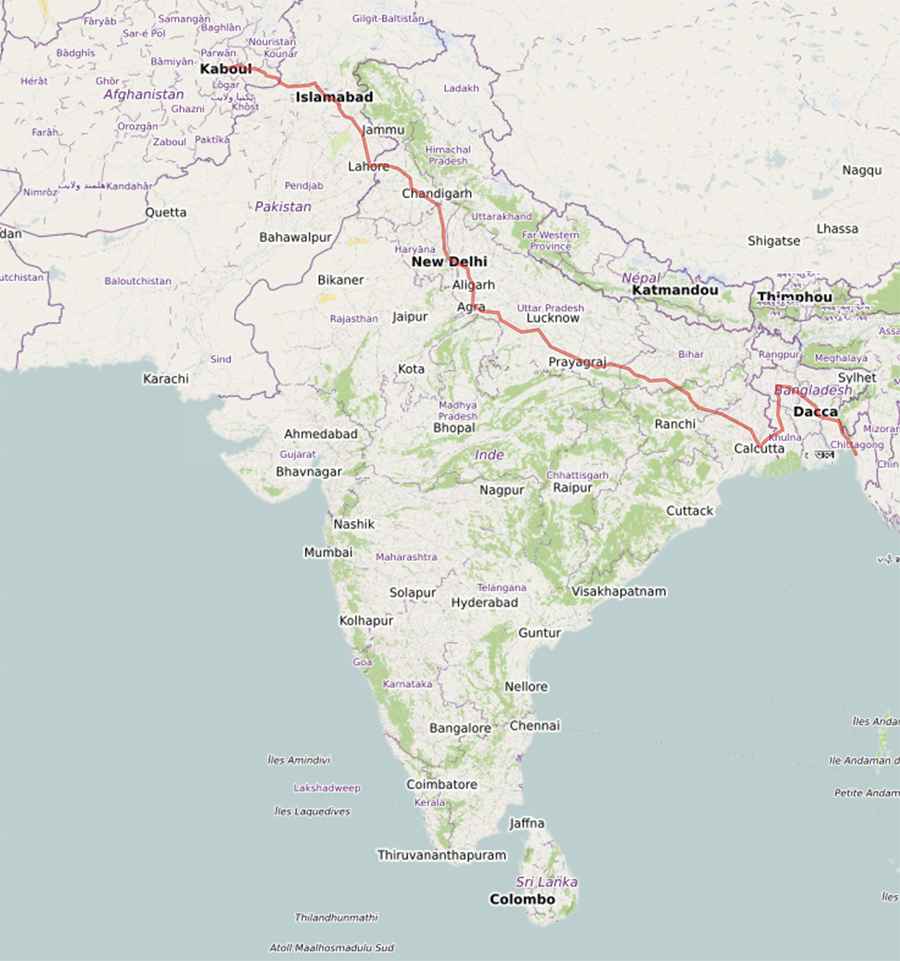Grand Trunk Road is one of Asia's oldest and longest roads
The historic Grand Trunk Road is an ancient route in South Asia that stretches over 2,400 km (1500 miles) from Kabul to Kolkata. This iconic road passes through Afghanistan, Pakistan, and India through busy lanes, heavy traffic, and rich history. Known as Uttarāpatha in ancient times, it has existed for over two thousand years.

Where does Grand Trunk Road start and end?
The road is mostly paved. It’s often called the "Gernaili Sadak" (the Generals' Road) and Sadak-e-Azam ('The Grand Road'). It covers a distance of 2,400 km (1,500 mi). The journey is an unforgettable experience. It is a fascinating highway, extending from Kabul through Lahore, Delhi, and reaching Kolkata in West Bengal and Chittagong in Bangladesh. It still forms a vital link for trade and communication in the social strata that live in this region. The Grand Trunk Road starts in Kabul, Afghanistan, and continues to Pakistan near Peshawar through the famous Khyber Pass. This famous international mountain pass, at an elevation of 1,070m (3,510ft) above sea level, is one of the oldest known passes in the world, connecting Afghanistan and Pakistan, cutting through the northeastern part of the Spin Ghar mountains. Beyond this mountain pass, the Grand Trunk Road arrives in the suburbs of Taxila, goes down to Lahore, and crosses into India at Wahgha. After 2500 km, the road ends at Kolkata. Nowadays, the road is still by far the busiest, wildest road in areas that are now part of Afghanistan, Pakistan, and India.
What does Grand Trunk Road mean?
The Grand Trunk Road (usually abbreviated to GT Road) is one of South Asia's oldest and longest major roads. Over the years, it has functioned both as a major trade route and as a convenient right-of-way for invading armies.
Is the Grand Trunk Road dangerous?
It is considered dangerous not because of risky heights or disheartening road conditions, but because of traffic congestion. You mustn't be surprised when your car gets into a traffic jam, created by dromedaries using one of the lanes. Trucks, buses, bicycles, pedestrians, and animals have turned parts of this heavily-used road into a major headache. If you’re planning to drive here, you’ll want to be as alert as possible. The road is full of trucks and rattling buses manned by drivers without much respect for their lives - or yours. And then there's the cyclists, the pedestrians, the salesmen, the ox carts, the cows, the buffalos...
Who built Grand Trunk Road?
It is one of the oldest road routes in India. In Antiquity, it was known as Uttarāpatha, "the upper road." For more than two millennia, it linked the Indian subcontinent with Central Asia. The road was rebuilt by Sher Shah Suri, a ruler of the Indian subcontinent, in the 16th century. In the colonial era, the British developed an ancient route into a highway across the breadth of their realm. During the British rulers of colonial India, the road was renamed as the Grand Trunk Road. Rudyard Kipling called it 'a river of life,' but for the modern driver, it's a nightmare.
Pic: By Bhadani (talk) - I (Bhadani (talk)) created this work entirely by myself., Public Domain, https://commons.wikimedia.org/w/index.php?curid=31775821
Map. By Lucas(CA2) - Own work, CC BY-SA 4.0, https://commons.wikimedia.org/w/index.php?curid=129297499
